Search the Community
Showing results for tags 'jrx design'.
-
NEWS! - Aircraft Released : JRX Bell 407 for X-Plane 11 and 12 Just in time for Christmas, JRX have released their version of the Bell 407 for the X-Plane 12 Simulator. Both X-Plane versions are actually catered for here, but purchase price is the same for either of the X-Plane 12 or X-Plane 11 versions, there is no deal for both. Obviously the X-Plane 12 version comes with better effects, dynamics and lighting. The Bell 407 is a four-blade, single-engine, civil utility helicopter. A derivative of the Bell 206L-4 LongRanger, the 407 uses the four-blade, soft-in-plane design rotor with composite hub developed for the United States Army's OH-58D Kiowa Warrior instead of the two-blade, semi-rigid, teetering rotor of the 206L-4. The Bell 407's fuselage is 8 inches (20 cm) wider, increasing internal cabin space, and includes 35% larger main cabin windows. The more powerful Rolls-Royce/Allison 250-C47 turboshaft allows an increase in Maximum Takeoff Weight and improves performance at hotter temperatures and/or higher altitudes. The helicopter has standard seating for two crew and five cabin seats. Features Include, but not limited to: High detail, fully animated 3D-model with PBR textures up to 4k resolution. Fully VR compatible. Accurate flight model. Complete and accurate start up and shut down functionality. Dynamic weights for optional fuel and load configuration. Bespoke custom made and accurate instrumentation. Optional autopilot unit and a full IFR navigation instrumentation suite. Custom instrument HDR spill lighting. HDR internal and external lighting. Dynamic vibration model with speed increase / decrease. RXP GTN integrated on a custom tablet. AviTab with custom tablet. Highly detailed pilot and co-pilot, with optional dual controls. Optional body decals. Complete FMOD sound package. Headset attenuation, with optional ATC radio chatter. Particle system for heat blur animations. 20 liveries including civil, service and military variants. Included paint kit for body, seats, ID plates, interior trims and pilots’ uniforms. Flight configuration and options, all done in cockpit either in 2D or VR. Full lifetime support at the forum, product updates and development as required: Windows, Mac and Linux compatible. JRX Design have already built up an impressive portfolio of Helicopters, so this Bell will also reek of quality and flying performance. Designed by JRX Design Support forum for the JRX B407 ______________________________ The Bell 407 by JRX Design is NOW available! from the X-Plane.Org Store here : JRX Bell 407 for X-Plane 12 Priced at US$35.99 Requirements X-Plane 12 (not for XP11. If you want the XP11 version, get it here ) Windows, Mac or Linux - 8 GB+ VRAM Recommended Download Size: 1.4 GB Current Version: 1.0 (December 22nd 2023) JRX Bell 407 for X-Plane 11 Priced at US$35.99 Requirements X-Plane 11 (not for XP12. if you want the XP12 version, get it here) Windows, Mac or Linux - 8 GB+ VRAM Recommended Download Size: 1.4 GB Current Version: 1.0 (December 22nd 2023) ___________________________ News! by Stephen Dutton' 23rd December 2023 Copyright©2023: X-Plane Reviews (Disclaimer. All images and text in this review are the work and property of X-PlaneReviews, no sharing or copy of the content is allowed without consent from the author as per copyright conditions) All Rights Reserved
-
Aircraft Review : Messerschmitt-Bölkow-Blohm Bo 105 DBS-4 by JRX Design It has been a very strange few months. Aircraft that were very significant in past milestones for the X-Plane Simulator have been recently replaced with more modern versions. First it was the FlyJsim Q400 in it's new Q4XP guise, then along came the CRJ-700 from AD Simulations that echoed the very landmark CRJ-200 from JRollon and now here is another machine in the Messerschmitt-Bölkow-Blohm Bo 105 DBS-4 by JRX Design. This one echoed another very significant aircraft in the ND Art & Technology's BK-117. Tired now, but the BK-117 was simply sensational back in it's day, and the one machine that drew me to helicopters and wanting to fly them... Sitting now in the JRX MBB Bo 105 brought all those recessed BK-117 memories back to life with a bang! The BK-117 is a later evolution of the MBB Bo 105, the machine reviewed here. But the similarities are quite impactful when comparing the aircraft. The Messerschmitt-Bölkow-Blohm Bo 105 is a light, twin-engine, multi-purpose helicopter developed by Bölkow of Ottobrunn, West Germany. It was the first light twin-engine helicopter in the world, and the first rotorcraft that could perform aerobatic maneuvers such as inverted loops. However aerobatics are verboten, and aerobatics are actually prohibited in the Rotorcraft Flight Manual. While not being considered a visually attractive helicopter by some pilots. The Bo 105 was known for possessing steady, responsive controls and a good flight attitude. Most models could also perform steep dives, rolls, loops, turnovers, and various aerobatic maneuvers; according to MBB the Bo 105 is cleared for up to 3.5 positive G force and one negative. One benefit of the Bo 105's handling and control style is it's superior takeoff performance, including significant resistance to catastrophic dynamic rollover; this is a combination of light weight and the twin-engined configuration that enables a rapid ascent in a performance takeoff. Perhaps the most significant feature of the Bo 105 are its rotor blades and rotor head. The rotor system is entirely "Hingeless", in the rotor head consisting of a solid titanium block to which the four blades are bolted; the flexibility of the rotor blades works to absorb movements typically requiring hinges in most helicopter rotor designs. The rotor blades are also made from reinforced-plastic glass-fiber composite material; the flexibility of the main rotor allows for active elements other than rotor pitch changes to be removed, greatly simplifying maintenance and extending blade lifespan. The reliability of the advanced rotor system is such that, in over six million operating hours across the fleet, there was a total of zero failures (as of 1991). The rigid rotor blade design adopted on the Bo 105 has been partially responsible for the type's agility and responsiveness; and it remained an uncommon feature on competing helicopters throughout the Bo 105's production life. The aircraft unusually was also not designed or created in a proposal by the military, but was very quickly procured by the German Army when they decided to create a specialist anti-tank version armed with up to six Euromissile HOT missiles, designated as the Bo 105 PAH-1. A total of 212 Bo 105 PAH-1s were delivered between 1979 and 1984. The Bo 105 is however far more famous for it's significant (EMS) Medevac, and Police surveillance work, MBB at one point held 35% of the total EMS market share, which the cabin can be configured to accommodate up to three passengers on a single rear bench, which can be removed to make room for cargo or a stretcher, which can be loaded and unloaded via the large clamshell doors located at the rear of the fuselage. Totally 1500+ aircraft have been built built between 1967 and 2001. Notable is the DBS4, which is a version of the CBS4 that was certified in the UK for the offshore oil and gas market. The aircraft features a full IFR kit, dual inverters, provisions for pop-out floats and a fuel dump system, radar alt, and a number of other small features and systems that make it different from other 105s. MBB Bo 105 DBS-4 by JRX Design First impressions of the Bo 105 are striking, but not surprising, as the earlier JRX SA 341B and SA 342J Gazelle was also excellent in it's design and quality fit-out. The same totally applies here as expected. The paneling and the general shape of the fuselage is excellent... ... but the riveting is painted on and not mapped, it passes the test as you have to get close to be aware of the non-mapping, however that level of 3-dimensional detail is now quite common in any high-quality aircraft. Were required however the raised mapping is actually done, and the detail delivers in great louvre detail and surface appendages. You have four nice engine exhausts with two per two 313 kW (420 shp) Allison 250-C20B engine. And note the internal cones on the inner two exhausts. Tail-boom, horizontal stabiliser and upright support are also very good as is the required aerials and tail-skid. Notable are these small wings at the rear... they are stabilators when they have a degree of movement, and stabilisers when they are fixed. They are “upside down” airfoils that provide downforce instead of lift, just like on race cars. One of their functions is to reduce the nose-down attitude in cruise which makes the fuselage fly more level and reducing drag by exerting a downward force on the tail-boom, which raises the nose. Here on the MBB 105 they are quite notably big aerofoils Glass is excellent. Nice shape and depth and feels very realistic. Glass has to perfect on helicopters so you get the right perspective vision, perfection makes it also authentic. The green overhead tinted-windows are also perfect (in opacity) but clear internally... ... Highlights are the excellent twin-wipers with worn-wear arms and the perfectly set blades. I'm not crazy about the inner window frame, just a plain coloured frame, here it doesn't feel very realistic, however the inner window opens though via a "Hotspot" middle window, but the same arrangement on the rear windows are not animated. The unique fixed-head rotor is perfectly realised and recreated. Detail is as expected in all in the required components, bolts and assemblies. The mast is quite short but the plates and their rod link assemblies are colour coded and well done. Nice details are the balance weights on the inner blades and notable the very nicely aerofoil shaped blades with great realistic wear on the ends. Exactly like the Gazelle, the rotor system is also only semi-animated... the Collective (bite) is nicely animated, but the rotor head (pitch/sideways) movements are again not active. Rear tail-rotor assembly is also very good, links and rubber covers that are all very realistic, note the short rear almost square blades. There is a full yaw animated movement on the blades, and all the linkages work perfectly. Doors... have both the front and sliding rears open by direct "Hotspots", and so do open are the twin-cam opening rear doors. There is a cavernous open space inside, with the option of filling it with cargo. The two forward cabin doors can also be removed via the menu. Cabin Yours eyes are immediately drawn to the full bulkhead padded rear seating for three people. Both cushion support and soundproofing in one, it covers the full huge rear bulkhead. Seat material is black leather with white stitching, gives off a very nice comfortable feeling, and very well done here, the 70's style foam covered headrests are also extremely well authentic to the period (70's Ford cars anyone, Escort, Capri). Front seat assemblies are excellent, with military style tracks and metal drilled frames. Shame the seats are not animated, that would have been a real treat. The feeling in the cabin is however dated, not by a poor application, but by design. It has that clamshell dark cream molding technique and again from the period. This is also very evident from the restricted view from the pilot's seat. The frame curves into your forward view, and the sides feel thick and chunky, the huge instrument panel also takes up a lot of the forward view, most choppers feel airy, but not in here as it feels enclosed. Menu Top Instrument panel are two options. Left is a folded map, that when selected, then selects the X-Plane Local map. The right selection is the "Flight Manual", which pops out VR (Virtual Reality) style. The manual both inserted and expanded is quite old fashioned in layout and design (another throwback to the BK-115). The top section is the "Aircraft Configuration" or options and settings. The "Set Fuel Load" in 25%, 50%, 75% and 100% filling percentages, and below "Weights". Important in that any selection of the options must be made before flight... once in the air you can't then change anything on the menu! The lower section is a "Checklist style" area... there are 10 Tabs in the "Checklist" that cover everything from PreFlight to Aircraft Limitations. You go through the checklist via two hotspots set on the top (Go Backwards) and the bottom (Go Forwards) of the VR "Flight Manual". Checklist detail is extremely good, but difficult to read in the set position and small font text. Aircraft Configuration The Aircraft Configuration list (of options) are all colour coded. Top to Bottom, you have in red; "Remove Before Flight" and "External Power Unit"... the first puts tie-downs, rotor covers and flags on the aircraft, the second option puts a connected to the aircraft, a trolley GPU and even a very nice operator positioned to monitor the unit. White options include, "Fly With Co-Pilot" and "Duel Flight Controls". The Bo 105 already comes with a very nice and head animated pilot, the option here also gives you a Female Co-Pilot with strange hair but lovely "Mechanix" gloves who is also head animated, but not to the controls like the pilot's. I heard that rear passengers are coming. "Duel Flight Controls" gives you the option to have a second set of controls on the left side (Cyclic and Collective). Seagrass Green options include; "Remove Doors", "Flight Steps", Search Light", "Internal Cargo Load", Missile Rails, "Cargo Hook" and Emergency Floats. All the options here are excellent and of high quality detailing. The "Remove Doors" option will take away the front doors, and lock the rear doors open. Cargo option fills that huge vacant rear area with nice crates, but they add a lot of weight to the aircraft with no adjustment to the weight. I don't know if the Cargo Hook works, as it is not mentioned in the manual? The side steps are nice as is the forward Search Light. The Emergency Floats are also highly detailed with a fuselage attached airpump (but again I don't think the floats inflate?). Super nice are the six Euromissile HOT missiles. The HOT (French: Haut subsonique Optiquement Téléguidé Tiré d'un Tube, or High Subsonic, Optical, Remote-Guided, Tube-Launched) missile is a second-generation long-range anti-tank missile system developed originally as an effort to meet a joint German-French Army requirement. The HOT missile is tube-launched and optically tracked using the SACLOS guidance system with command link through trailing wires which steers the missile using thrust vector controls on the sustainer motor during the missile's flight. When the gunner fires the HOT missile, the missile activates a thermal battery, flares and a small gas generator spins up the gyro. The same gases for the gyro pop the covers off both ends of the cylindrical container the HOT missile comes packed in. Moments later, both the sustainer motor and the booster are fired, ejecting the missile from the container. Unlike most antitank missiles, in which the booster burns completely before leaving the container and then the missile coasts a safe distance before the sustainer motor ignites, HOT's booster burns both inside the container and outside the container for approximately one second giving the missile a high speed. The sustainer motor burns for 17 seconds, a flight time whose path exceeds the length of the trailing wires which dictate the maximum range of the missile. Note the changed olive-green seating for the military (German) livery. Green options include; AviTab (Plugin Required), RealityXP GTN 750/650 Touch avionics unit if you have that optional product and bottom is the option for the Dittel AutoPilot Unit. I found the AviTab would only display with the engines running, slightly annoying if you want to study charts on the ground. This is a nice Autopilot module by Dittel (now TQ Avionics), but oddly it is set (or feels) to the left of the top of the instrument panel than the centre (of which it actually is) or even to the right of the sided pilot's reach, it feels far away? but it is well done. Weights; In Yellow are the aircraft weights. Both the MTW (Maximum Takeoff Weight) is noted (2500kg) and the current TW (Total Weight) is displayed. The TW will change with any options and fuel weights, and you can add in extra Kgs in 10kg increments (up or down), or reset the aircraft's weight. The current version (B1.40) is also shown here for reference. Instrument Panel The Instrument Panel has a huge (massive) hood over the instruments, making it look far larger than it actually is, even so it is still a big unit. The centre pedestal (console) is also very long and detailed as well. The main flying instruments are grouped down on the right in two columns... Top row is (left) the Artificial Horizon and the Altitude Meter, Second row is the HSI (Horizontal Situation Indicator) and Vertical Speed Indicator, Third Row is the ADF Pointer and Radio Altimeter, slung below is a Clock. The instruments are all very clear and readable. The centre section has mostly top in the Backup Instruments (for the Co-Pilot). Airspeed Indicator, Artificial Horizon and main (pilot) Airspeed Indicator top row, Altimeter and Directional Gyro, that looks more like a CDI or Course Deviation Indicator. Installed is the AVAD (Audio Voice Alerting Device) that can be turned off here. And a testable is the specific MBB "Mast Moment" MMI indicator.. "A rigid (or sometimes called hinge-less) rotor system is capable of transmitting high bending forces to the main rotor shaft. When a pilot makes a cyclic movement causing the main rotor disc to tilt, the fuselage wants to follow. In flight, with a rigid rotor the mast bending moment is low. However, when the fuselage is in contact with the ground and cannot follow the main rotor disc the bending moment can be very high. Because large cyclic displacements on the ground have the potential to damage the mast assembly, a mast moment indicator (MMI) is installed. The gauge is a single dimension indicator that shows the total moment being applied to the mast. When the gauge reads high, the pilot has to figure out what direction to move the cyclic to reduce the mast moment." Next row is a Torque Indicator... The Torque Indicator is interesting as it is set on a 90º angle, and not positioned directly upwards? It is noted this way for Slinging (loads), but it looks very odd?. Next to the Torque Indicator is the RPM in N2 (Engine #1 and Engine #2). Then there is right a group of six dials that cover engine TOT (Turbine Outlet Temperature) for engine #1 and #2, and below N1 (Engine #1 and Engine #2)... bottom row right covers Fuel Gauge and Fuel Pressure. Two groups of three gauges bottom left cover (top) Oil Temperature, and lower Oil Pressure. Far left is the DME readout. Forward Pedestal (console) are the electrics (Buses) and working Circuit Breakers (Fuses). Gauges right cover Volts and Amperes. Between is the Hydraulics Test. The red cover left is the Fuel Jettison, the two right red covers the "Emergency Fuel" cutoffs. Between are the Instrument lights (switch), Emergency Floats, Inverters (1&2), Engine Anti-Icing (1&2) and wipers... bottom are the two VHF-COM 1 and 2 Radios, Starter switches (pink covers) and Main Battery and Generator (Eng 1&2) switches. Centre Pedestal is the Fire Extinguisher Panel. Below are Collins CTL23 NAV 1/2 radios, with a CTL62G ADF unit. Unusual is a "Funkwerk" Transponder. Bottom is a Garmin GNS 350, or if available the RealityXP GTN 750/650 avionics unit. Note the usable Collective Lock . Lower pedestal are two NAT N301A Audio Panels. There is a nice feature on the lower NAT audio panel. You can select 1 hour of "Radio Chatter" by selecting AUX and the chatter comes in three languages; American, French and Italian via the flag icons... but no British ATC? Actually British law prohibits the use of ATC broadcasts, as per "LiveATC", but still it would have been nice. The collective has two light switches (Search and Landing) and engine regulator. Cyclic has a HAT switch trim and RPM WARNING (cancel) button. Both controls are very well modeled and highly realistic with the Cyclic a B8 style handle. There is a small overhead switch panel with the twin-engine throttle levers (the rotor brake is down floor right of the pilot). Switch gear up here covers Pitot Heats (#1 and #2), Continuous Ignition Eng (#1 and #2), Fire Test, Floats Test, Fuel Pumps, Generator Fields (#1 and #2), Interior lights, External lights, Temperature Controls and an electronic HOBBS Hour meter. Overall it is a complicated cabin, that requires a little study before flight to workout where all the switch gear and items are located, once used you will work the aircraft well and correctly, but it is not all set out very ergonomically, as it is all very 70's in style and usability. ____________________ Flying the MBB Bo 105 First is the setting for those twin throttles. JRX originally set the throttle movement to the "Wing Sweep" setting, but reverted back to the standard "Throttle" setting. You can set each throttle to a slider (Throttle 1/Throttle2) to work independently, but I use the second throttle lever (Saitek X56) as my collective, so here a single "Throttle' setting works just as well. The Bo 105 startup procedure is quite easy. The Main Battery switch is under your left hand, and the two Bus Avionics switches far left upper pedestal. Each bus does a certain circuit, so you only get the VHF1 radio with only one switch on. The Collins CTL23s and the ADF CTL62G have to be switched all on manually. You can adjust the panel lighting (when switched on) via the top knob left centre panel, and very good it is. Next all the Auxiliary options are switched on via the OHP; Fuel Pumps, Pitot Heat, External lights/Anti-Col... then you are ready to start. Make sure your throttle is set in the IDLE position, then flip up the STARTER cover (pink) for the engine you want to start... then press the inner switch. Straight away the N1 will rise and then you go straight to the required overhead engine throttle lock switch (Fuel Cutoff) and press it. You don't have to touch the throttle at all, if the throttle lock does not work then the lever is still not set at the IDLE position. Once the RPM for that engine is at 50% then you switch off the start switch... pretty easy. Now you do exactly the same for the second engine start. One note is the dreaded "RPM Needle Split Horn" alarm. Mostly here to warn the pilot if the engine outputs or the RPM are not in the same performance parameters, or an engine out scenario... It is LOUD, and can be annoying if you can't shut it up. On the second engine start until it reaches within 12 points of other running engine's RPM it will go off "its trotter" as it should do, to kill the alert there is a kill switch left on the Cyclic, or you can set a button COMMAND to do the same thing (RPM Needle Split Horn). But I found sometimes I couldn't shut the damn thing up, even when the engines were shutdown? (found to be a aircraft reload or location move reset). Once running you also have to provide separate power (unlock) both to the Main and Backup Artificial Horizons is they are powered directly off the battery, this is done via the second switch under the glareshield right. There is a full video available on the startup (and Shutdown) procedures that is well worth studying. I do like the flickering of the N1 dials to show the power is running through the engines. Throttle up to 100% RPM and we are ready to go. I was not perfectly attuned to the JRX SA 341B Gazelle, it is known as difficult aircraft to fly, and very fine movements were minutely required. I mastered it, but was not what you could say very proficiently. The Bo 105 is known as a more steady and responsive machine, and I felt that straight away. It feels also like a weighty aircraft, so you have confidence in balancing it easy and the very light push required by the tailrotor helps the cause as well. That came to pass... I easily found I could hover in the same position and only required slight stick movements keeping myself in a perfect hovering position. Any drift was also easily corrected, so the more I sat here in the hover the more confident I got by the minute. Touch of collective and touch of forward stick, and I was moving upwards and forwards easily... .... placid it may be, but you have a lot of power available via those two Allison 250-C20B turboshaft engines, too much collective and you will literally takeoff and go straight up (official Rate of Climb is 8.00 m/s (1,575 ft/min)), and with this extreme climb power the Bo 105's also have a tendency to roll right when in a high-power right turn which has been documented with a MBB test pilot in Siegfried Hoffmann crashing and killing himself. So the trick is not to showoff in here, just keep everything smooth and contained and the aircraft will follow along quite nicely, you can see why the Bo 105 was so good for EMS work, in fact perfect as it is a steady easily controlled and flyable aircraft. One of my favorite pastimes with the ND BK-115, was to track down motorways or highways at low but fast speeds. So I just couldn't resist the temptation again in the Bo 105... the thrills came back with vengeance, it is fun and exciting to fly low level at speed, but you have to watch out for all those cross highway powerlines. Maximum Bo 105 speed is 242 km/h (150 mph, 131 kn), with a never exceed speed of 270 km/h (170 mph, 150 kn), usually you cruise around 204 km/h (127 mph, 110 kn) (best range cruise), so the Bo 105 is not the fastest aircraft out there. Range is 657 km (408 mi, 355 nmi) at 1,525 m (5,000 ft) (standard fuel, maximum payload) with a ferry range: 1,112 km (691 mi, 600 nmi) at 1,525 m (5,000 ft) (with auxiliary tanks). Overall you get an endurance 3 hr 30 min (standard fuel, maximum payload) and a service ceiling of 5,200 m (17,000 ft). The aircraft has a fuel capacity of 160 Gal (570 l), and the fuel is stored in only one main tank which is connected to a single supply tank at the front of the aircraft and the engines then draw their fuel by the engine-driven pump(s) from the supply tank. The supply tank only holds 74Kg (around 93 liters or 205 pounds) as a backup supply. I could do this all day... Sounds of real Bo 105's are very hard to come by... what we have here is a collection of community based recordings, but they are actually very good right through the range with only a few loops here and there, blade slap is present, but were over-rode in my case with the XPRealistic blade slap being more prominent, overall I have heard a lot worse than we have here. Not entirely happy with the trim... a single movement of the trim or HAT switch made the aircraft surge up or down violently, in that the trim increments were extremely wide. So there was no adjusting but you got these large changes to the angle of the controls. The only way to get control back was to use the Trim Centre command to reset the trim back to neutral. The Dittel AutoPilot also feels still too far away, although it is centred on the windshield (the map/manual storage is offset). The unit is a very basic 2-Axis unit, which means you centre the aircraft at the right speed, heading and altitude and turn on the AP to the corresponding servos, and it will hold those alignments.... but it is not a solid feel or use, as any slight movement or knock of the cyclic and it loses the alignment, so you have to monitor the systems continuously. It works but don't at all rely on it. Lighting Overall the JRX Bo 105's lighting is excellent. We already know you can adjust the instrument brightness, which is already very good. But there is another option via the second knob set below the instrument brightness knob... this is the green tint option, that gives you a military look and feel. You can blend the two together if you wish, but one or the other is preferable. Not finished there with colours, there is also the overhead red cabin light. This effect with the green tint looks a bit like a traffic light reflection... but it is very realistic, and looks sensational externally. Externally the lighting is also very good... There is a single landing light in the nose that can be adjusted brighter and darker (OHP), but it still comes on too strong as a lot of users have noted, the light source can be seen through the body work as well (X-Plane issue). Here I have the Search Light on as well. Navigation lights are on the outboard of the stabilisers, as are the strobe lights, and single white navigation is rear. Top tail beacon is very effective and so are the near perfect strobes. Arriving back at the field the Bo 105. I found it was easy to lower the speed in a slight centering of the cyclic, while reducing height with the collective... you can find the collective lift does need a reduced amount of bite, and that can send you into a false sense security in recovering the lift power (or too late in dropping out of the air). Point the nose down slightly is a better way of descending, but that obviously comes with more speed... the trick is somewhere in the middle to get the best approach descent and control the speed. I had to do a few approaches to get the procedure right. Nice is that you are not fighting the tail or yaw, slight rudder movements will control that aspect, again you can see why this machine is so very good in it's EMS and S&R roles, the workload on the pilot is quite light at those really critical aspects of the flight. As noted the JRX Gazelle is highly (if extremely) challenging of your skills, certainly in the approach, transition and hover phases, but that it is not the same case here with the Bo 105.... if in fact the opposite. The ETL or Effectively Translational Lift boundary is noted on the Airspeed Indicator at the line between the Green and Yellow bands, about 50 knts, which is also a nice approach speed... but watch you don't drop the collective too far or lose the lift, it is very disguised in the feel... ... once though the ETL boundary and you reset the approach to around 20 knts (not the usual 30/30), and this feels nice with great control. Into the hover and a 90º yaw is need to line up with the markings, that aspect is also done with ease... ... aligned, a slight slip to the left is now needed... I'm showing off now, the Bo 105 responds perfectly to my movements while controlling the hover status... ... I can see the marking line to judge my position and a slight let down of the collective and that landing was as good as it gets. "Sweet as" There is nothing to give you that buzz when it all goes right. But this is certainly an aircraft is one you can easily parallel with. Helicopter flying not easy and will never be, but an aircraft like this can meet you say... halfway in your limited skills. _________________ Liveries There are 26 liveries and all are excellent. They vary from Civil to Air Ambulances, Coast Guards, Police, Red Bull (2), Rescue and Military versions... hell even the Northern Lighthouse Board aircraft is in there! ADAC (German) is the default. A PaintKit is also provided. _________________ Summary For a decade "Mr Helicopter" in the X-Plane Simulator was DreamFoil Creations, but now there is another "Mr Helicopter" in the form of Joe Rowe of JRX Designs. First it was the spectacular debut of the SA 341B and SA 342J Gazelle in 2020. Now here is JRX Design's second release in the Messerschmitt-Bölkow-Blohm Bo 105 DBS-4, a general purpose helicopter favoured by EMS and Policing departments around the world. Not initially created as a military aircraft, the platform was still successful as a German specialist anti-tank version armed with up to six Euromissile HOT missiles, designated as the Bo 105 PAH-1. The aircraft is also reminiscent of another X-Plane MBB classic the ND Art & Technology's BK-117 from a decade ago. The Bo 105 is notable for being the first "Hingeless" rotor head aircraft, which consisted of a solid titanium block to which the four blades are directly bolted; the flexibility of the rotor blades works to absorb movements typically requiring hinges in most helicopter rotor designs. The rotor blades are also unique in being made from reinforced-plastic glass-fiber composite material. Most helicopter releases for X-Plane are usually extremely highly detailed and feature laden. And that is also the case here with this excellent Bo 105. Modeling and detail quality is of the highest order (and the JRX Gazelle had already set the benchmark high). Externally and internally the Bo 105 is exceedingly good, with very if excellent good lighting effects. Sounds are community sourced, but also very good in context. The VR Menu (manual) is cleverly done with built in Checklist, with the usual features of remove (front) doors, Cargo Hook, Searchlight, Emergency Floats, Flight Steps, Internal Cargo, Twin Controls, Pilot/Co-Pilot, and very well done Euromissile HOT Missile Rails. Other extras incude AviTab, RealityXP GTN 750/650 avionics unit option, and a basic Dittel Autopilot. Both "Radio Chatter", specific MBB "Mast Moment" MMI indicator and AVAD (Audio Voice Alerting Device) are also represented. Huge set of 26 liveries are provided with the package, as is a PaintKit. Flight dynamics and performance is also very good, as the MBB Bo 105 is a sweet flying machine. But a few areas can still be refined, as I am not crazy about the current trim actions, and aircraft has an odd issue loading pattern when reloading in Sim. (Starting from the Desktop or doing a Developer reload is fine). A few "wishlist" items would be nice... certainly a EMS variant, rear passengers (noted as already coming), winch (working would be even better) and adjustable cargo weights... not asking too much! And YES it will be X-Plane12 compatible. Another superb release from JRX Design's, can it get better than this? Yes just more of the same from the new "Mr Helicopter" Joe Rowe. The Messerschmitt-Bölkow-Blohm Bo 105 DBS-4 is now available for purchase from the X-Plane.OrgStore. __________________ Yes!... Messerschmitt-Bölkow-Blohm Bo 105 DBS-4 by JRX Design is now Available from the X-Plane.Org Store here : Messerschmitt-Bölkow-Blohm Bo 105 DBS-4 Price is US$34.95 Requirements X-Plane 11 XP12 Support when Available Windows, Mac or Linux 4 GB VRAM Minimum - 8 GB+ VRAM Recommended Download Size: 1 GB Current and Review Version: 1.40 (January 15th 2021) ___________________________ Features High detail, fully animated 3D-model with PBR textures up to 4k resolution. Fully VR compatible, configured by SimVRLabs. Accurate flight model tested, developed and approved by a current MBB Bo 105 pilot. Complete and accurate start up and shut down functionality. Dynamic weights for optional fuel and part configuration. Bespoke custom made and accurate instrumentation sourced direct from a 105 DBS-4. Optional autopilot unit and a full IFR navigation instrumentation suite. Fully functional circuit breakers and electrical system including AC / DC buses. Working fire warning and extinguishing system. Custom instrument HDR spill lighting. HDR internal and external lighting. Dynamic vibration model with speed increase / decrease, including entering and exiting translational lift. RXP GTN integrated on a custom tablet. AviTab with custom tablet. Highly detailed pilot and co-pilot, with optional dual controls. Optional body decals including HOT3 missiles, working floats, flight steps and cargo hook. Complete FMOD sound package with 113 individual sounds sampled from a real 105. Headset attenuation, with optional ATC radio chatter (US, FR and IE) for better immersion. Particle system for heat blur animations. 26 liveries including civil, service and military variants. Included paint kit for body, seats, ID plates, interior trims and pilots’ uniforms. Flight configuration and options, all done in cockpit either in 2D or VR. Full documentation, including all flight reference cards in cockpit. Real-life reference documentation and video tutorials including the start-up / shutdown procedure: https://youtu.be/BLxWiC1FnOs https://youtu.be/bz9NmdjchDM https://youtu.be/qGsdB9Jmk-c Full lifetime support at the forum, product updates and development as required: JRX MBB Bo 105 - X-Plane.Org Forum Windows, Mac and Linux compatible. Requirements X-Plane 11 Windows, Mac or Linux 4 GB VRAM Minimum - 8GB+ VRAM Recommended Download Size: 2.1 GB Current and Review Version: 1.1 (January 8th 2022) ___________________________________ Installation and documents: download for the 206 B3 is 993Mb and the aircraft is deposited in the "Helicopter" X-Plane folder. Full Installation is 2.63Gb Documents supplied are: BO 105 Real Life Documentation JRX Design MBB Bo 105 USER GUIDE V1.01.pdf Manual is quite basic but does come with very good instrument references, X-Plane basic system references... Checklist is built into the VR menu, and the provided video tutorials are excellent. The Eurocopter sourced documentation is excellent, enough detail here to build your own MBB Bo 105 from the ground up! Required is the AviTab (Plugin) Support forum for the MBB BO 105 _____________________ Aircraft Review by Stephen Dutton 21st January 2022 Copyright©2022: X-Plane Reviews Review System Specifications: Computer System: Windows - Intel Core i7 6700K CPU 4.00GHz / 64bit -32 Gb single 1067 Mhz DDR4 2133 - ASUS GeForce GTX 1080 8Gb - Samsung Evo M2 2TB SSD - Sound : Yamaha Speakers YST-M200SP Software: - Windows 10 - X-Plane 11.55 Plugins: Global SFD plugin US$30.00 : Environment Engine by xEnviro US$69.90 : RK Apps XPRealistic v2 - US$34.99 Scenery or Aircraft - EDDP - Leipzig/Halle International Airport by JustSim/Digital Design (X-Plane.OrgStore) - US$20.00 (Disclaimer. All images and text in this review are the work and property of X-PlaneReviews, no sharing or copy of the content is allowed without consent from the author as per copyright conditions) All Rights Reserved
-
NEWS! - Helicopter Released : Messerschmitt-Bölkow-Blohm Bo 105 DBS-4 by JRX Design JRXDesign created the sensational SA 341B and SA 342J Gazelle, and now they are back with another sensational release of the famous German Heilcopter Messerschmitt-Bölkow-Blohm Bo 105 DBS-4. The Messerschmitt-Bölkow-Blohm Bo 105 is a light, twin-engine, multi-purpose helicopter developed by Bölkow of Ottobrunn, West Germany. It was the first light twin-engine helicopter in the world, and the first rotorcraft that could perform aerobatic manoeuvres such as inverted loops. The Bo 105 features a revolutionary hingeless rotor system, a pioneering innovation in helicopters when it was introduced into service in 1970. Production of the Bo 105 began at the then-recently merged Messerschmitt-Bölkow-Blohm (MBB). MBB became a part of Eurocopter in 1991, who continued production of the type until 2001. (Wikipedia). Features Include, but not limited to: High detail, fully animated 3D-model with PBR textures up to 4k resolution. Fully VR compatible, configured by SimVRLabs. Accurate flight model tested, developed and approved by a current MBB Bo 105 pilot. Complete and accurate start up and shut down functionality. Dynamic weights for optional fuel and part configuration. Bespoke custom made and accurate instrumentation sourced direct from a 105 DBS-4. Optional autopilot unit and a full IFR navigation instrumentation suite. Fully functional circuit breakers and electrical system including AC / DC buses. Working fire warning and extinguishing system. Custom instrument HDR spill lighting. HDR internal and external lighting. Dynamic vibration model with speed increase / decrease, including entering and exiting translational lift. RXP GTN integrated on a custom tablet. AviTab with custom tablet. Highly detailed pilot and co-pilot, with optional dual controls. Optional body decals including HOT3 missiles, working floats, flight steps and cargo hook. Complete FMOD sound package with 113 individual sounds sampled from a real 105. Headset attenuation, with optional ATC radio chatter (US, FR and IE) for better immersion. Particle system for heat blur animations. 26 liveries including civil, service and military variants. Included paint kit for body, seats, ID plates, interior trims and pilots’ uniforms. Flight configuration and options, all done in cockpit either in 2D or VR. Full documentation, including all flight reference cards in cockpit. Real-life reference documentation and video tutorials including the start-up / shutdown procedure: https://youtu.be/BLxWiC1FnOs https://youtu.be/bz9NmdjchDM https://youtu.be/qGsdB9Jmk-c Full lifetime support at the forum, product updates and development as required: JRX MBB Bo 105 - X-Plane.Org Forum Windows, Mac and Linux compatible. The detail and modeling on the JRX Design Aérospatiale Gazelle was simply outstanding, so I am expecting a sensational aircraft here as well.. in other words JRX Design lifted their own bar of quality high, now they have to live up to their own exceedingly high standards. Images are courtesy of JRX Design The Messerschmitt-Bölkow-Blohm Bo 105 DBS-4 is now available for purchase from the X-Plane.OrgStore. __________________ Yes!... Messerschmitt-Bölkow-Blohm Bo 105 DBS-4 by JRX Design is now Available from the X-Plane.Org Store here : Messerschmitt-Bölkow-Blohm Bo 105 DBS-4 Price is US$34.95 Requirements X-Plane 11 XP12 Support when Available Windows, Mac or Linux 4 GB VRAM Minimum - 8 GB+ VRAM Recommended Download Size: 1 GB Current Version: 1.0 (December 16th 2021) ___________________________ News by Stephen Dutton 17th December 2021 Copyright©2021: X-Plane Reviews (Disclaimer. All images and text in this review are the work and property of X-PlaneReviews, no sharing or copy of the content is allowed without consent from the author as per copyright conditions) All Rights Reserved




.thumb.jpg.38ff343100c43e00e861b8a2ecc1c0cb.jpg)
.thumb.jpg.500e0bce5b9a99c22b8454acb94a561f.jpg)
.thumb.jpg.0fbee4ed56d25a1b423c78f9642ea7a0.jpg)
.thumb.jpg.a4cb4c6b3db4b37e1804a0c2014e45ed.jpg)
.thumb.jpg.23f250724aac3b42acb0359eedc1d81b.jpg)
.thumb.jpg.71c6314e0ca4a78695c8639b014859fe.jpg)
.thumb.jpg.522a12c5384d91cb32564ada491a5261.jpg)
.thumb.jpg.38fbb326ad000ad1e8bdb32700ba975b.jpg)
.thumb.jpg.6a483976bddec81bd09dccf96d858be1.jpg)
.thumb.jpg.4fb844f0ba36bde87a01310a2c811166.jpg)
.thumb.jpg.d05b8adb1678f163a83200177d3a8b26.jpg)
.thumb.jpg.c5f05754744dfbc8f0136c2a57718b29.jpg)





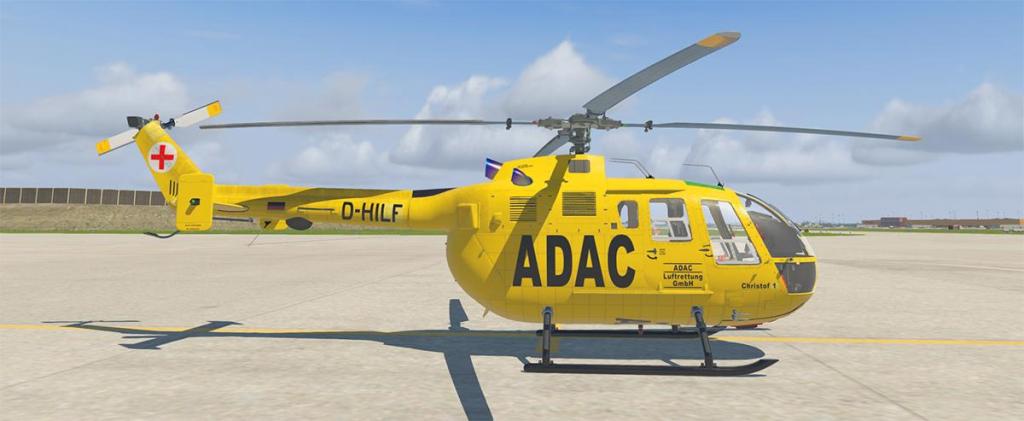

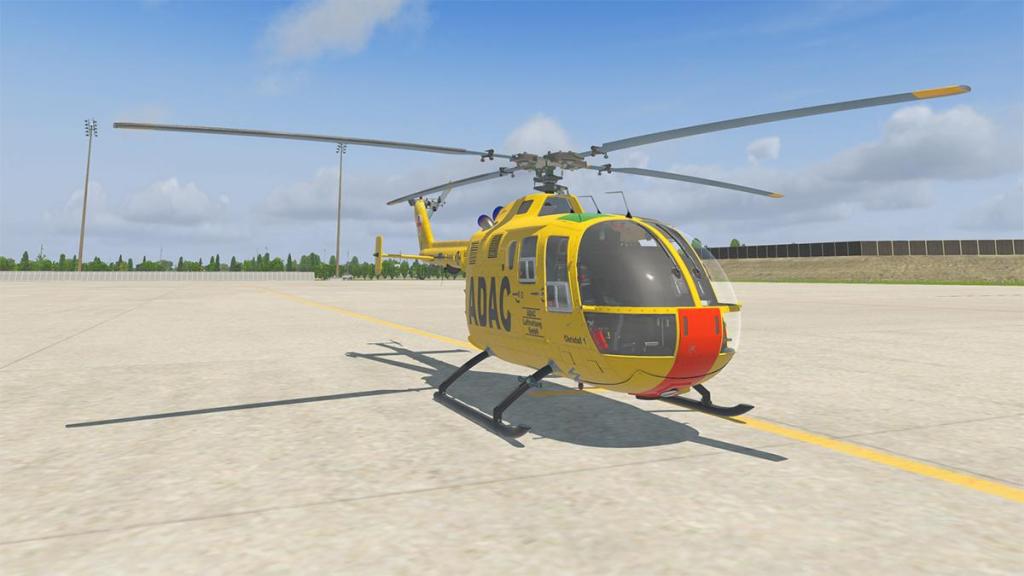



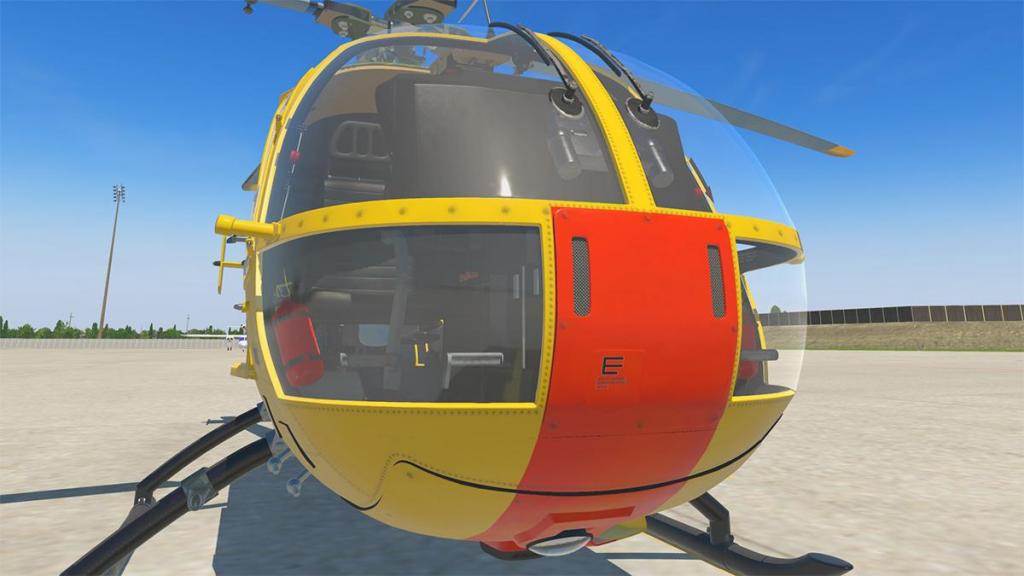










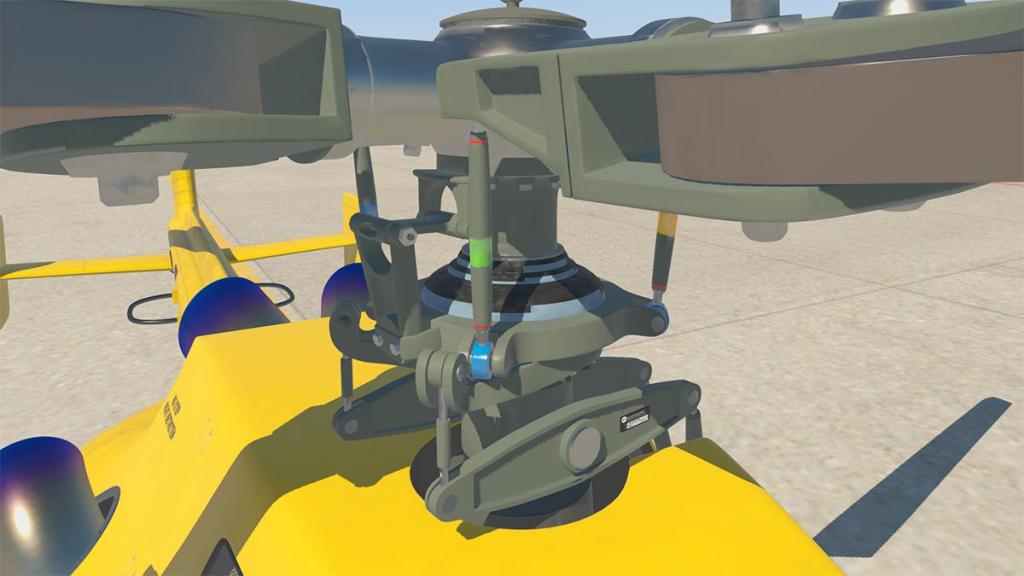




























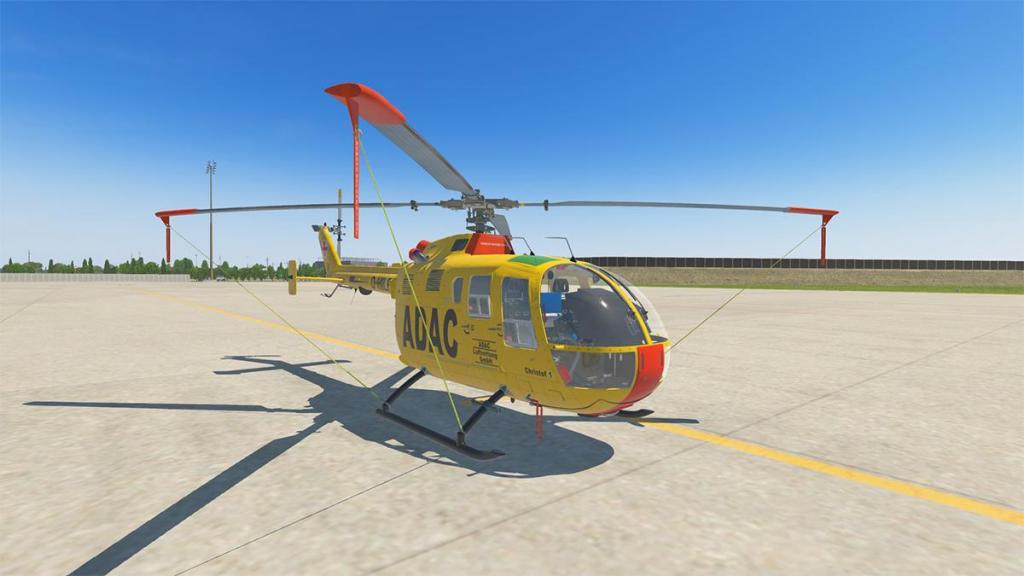








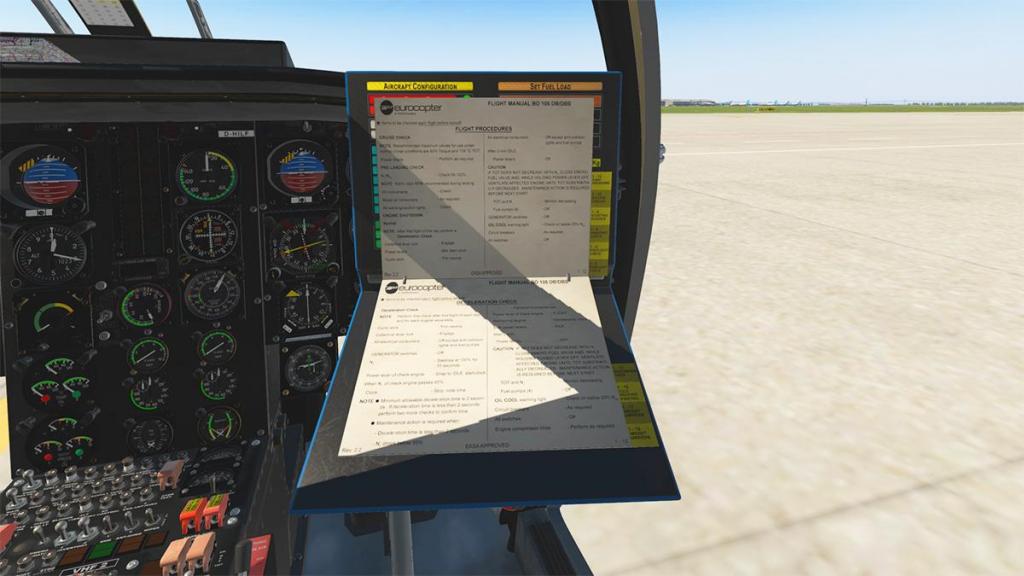














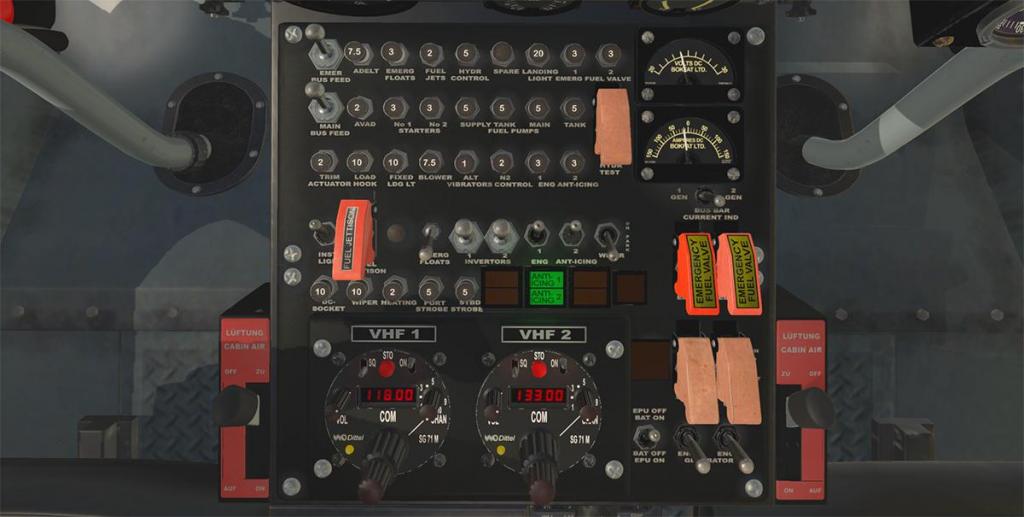
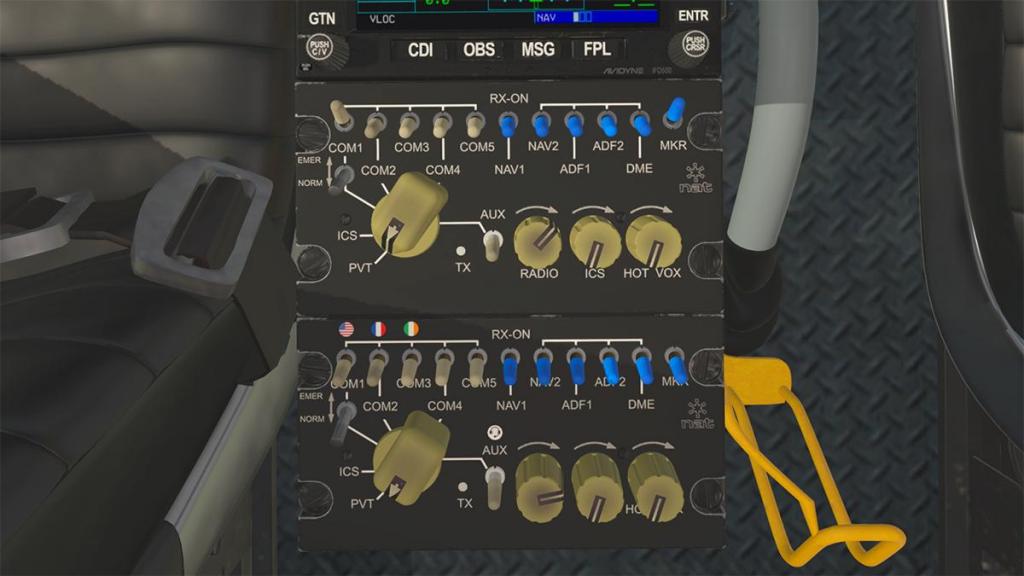


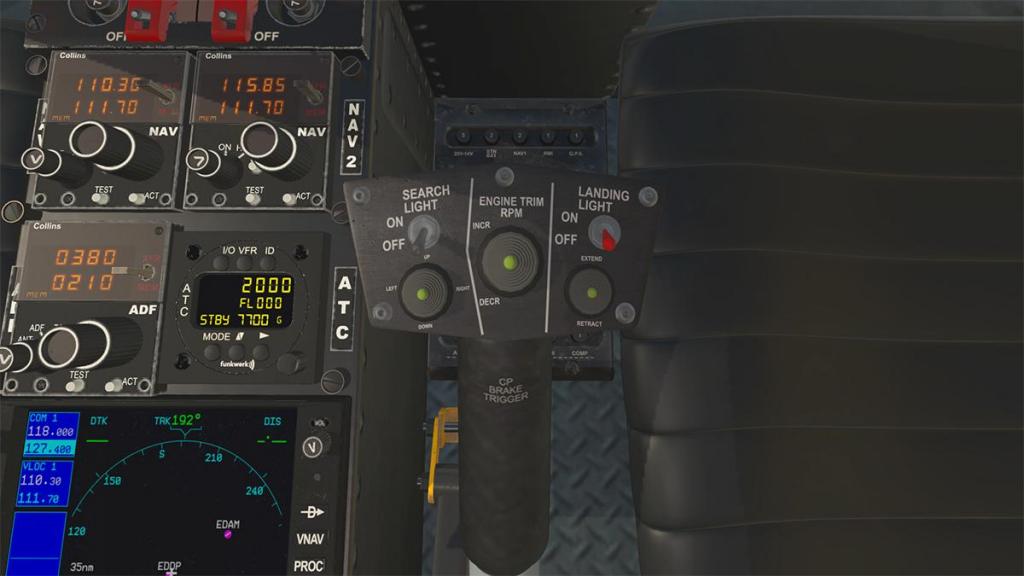
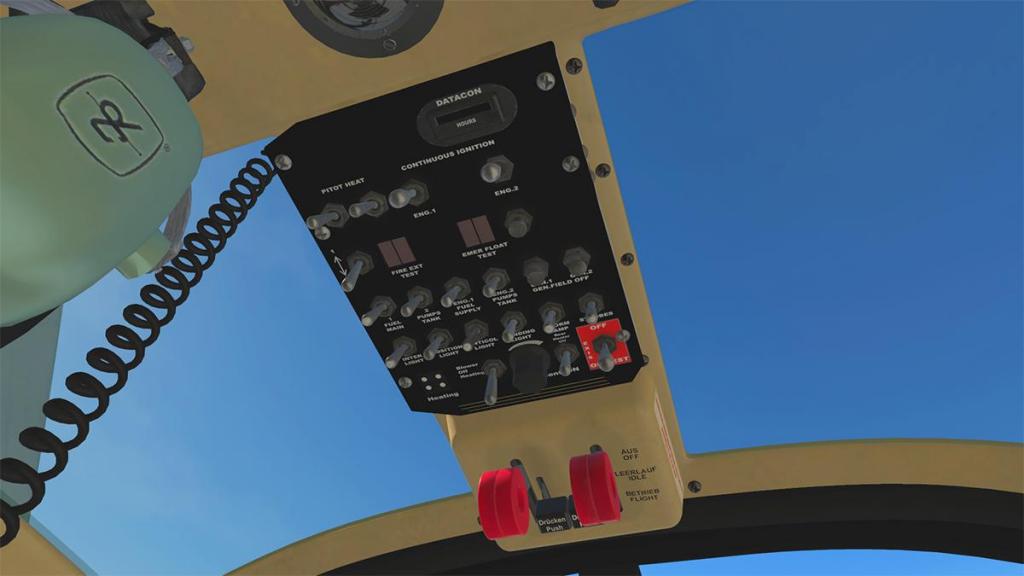
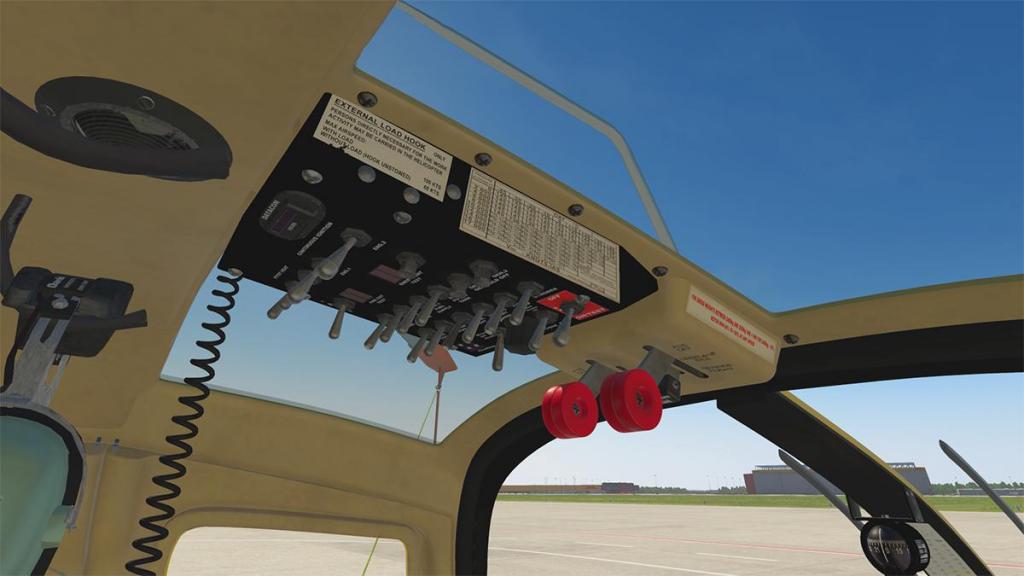













































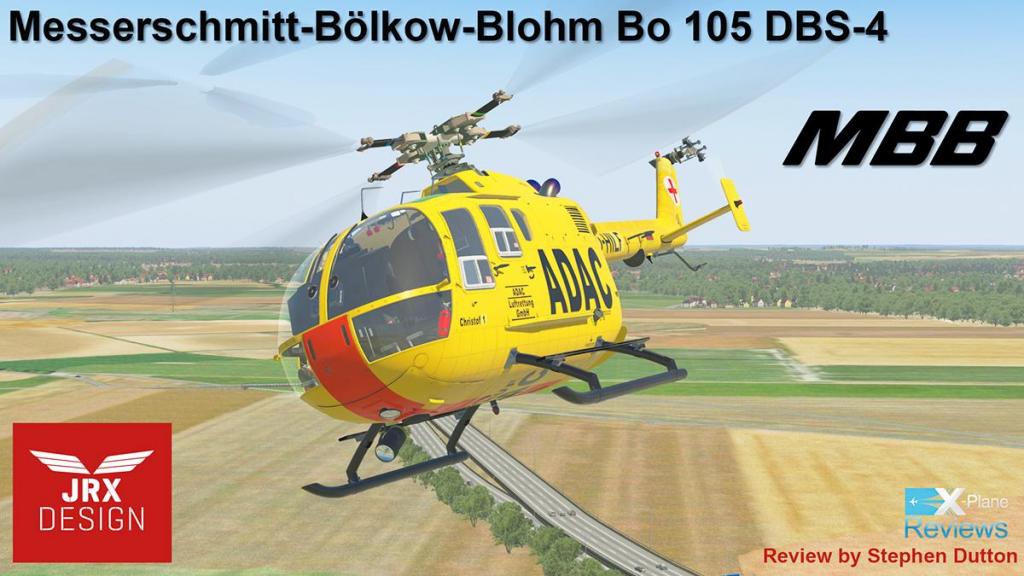













































.thumb.jpg.63a2ba2bd8340f7558da517b02fab7d5.jpg)
.thumb.jpg.16cbc0c01425e2d7361e229a6c0d0eb3.jpg)
.thumb.jpg.95fb2dcdca53442b68bb02d43d0d756b.jpg)
.thumb.jpg.3e8caf4eb8ab02614603db4ea0b6fbc2.jpg)
.thumb.jpg.7febca3523580f4b7f801ed14f0d26a5.jpg)
.thumb.jpg.1eb69c16e53886ad180b2e30db12d5f6.jpg)
.thumb.jpg.1ca97b20aa0518121075e402dd605984.jpg)
.thumb.jpg.f68ec355f7f2e5fa09f8efea23069265.jpg)
.thumb.jpg.9b549c2a7ea0237de7f61de9384c333d.jpg)
.thumb.jpg.7a66fc20e52451b183037c073e911eab.jpg)
.thumb.jpg.e1515da88f34f895c6cc440323b4bd95.jpg)
.thumb.jpg.510c33a88b1881948187ec8238848583.jpg)
.thumb.jpg.0efd376d33418d2120b08a880ab76cac.jpg)
.thumb.jpg.6d16faf35a544a78e07c00eef70a7908.jpg)
.thumb.jpg.116948dee1c65b3028f0fe62604baf13.jpg)
.thumb.jpg.78d6b95a19642d8987804f28594d1c02.jpg)
.thumb.jpg.43170695d88c93167328d3c3f62a5d35.jpg)
.thumb.jpg.82af2abf118ca18bc341e23be0ede23a.jpg)
.thumb.jpg.41c14f4bad0fa7476add787a3855d5ef.jpg)
.thumb.jpg.a21d1661bd5c08f7226c7c0458caa021.jpg)
.thumb.jpg.0035387dd3aac365a8fd8255fd04c2c7.jpg)
.thumb.jpg.985828406807f6afceef29d501de3e5d.jpg)
.thumb.jpg.de7169ffbe84bd84937f25bf74d0fedd.jpg)
.thumb.jpg.519f490000e16a383e407d287ef28530.jpg)
.thumb.jpg.d0a30bd96ce0386eb716e91e3aef751d.jpg)
.thumb.jpg.ef006cb9002b5a3843080b4eb3824d43.jpg)
.thumb.jpg.2b7342d56103885dc928fa14ebe00840.jpg)
.thumb.jpg.e1379e027b9dd11c24c87ce3af4d0250.jpg)
.thumb.jpg.01d9dde0424cf3ec0dfe392b83cc9b03.jpg)
